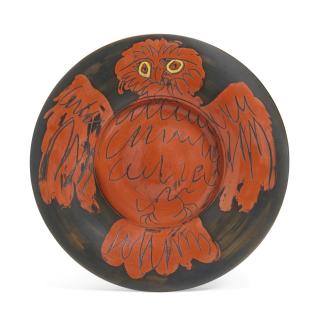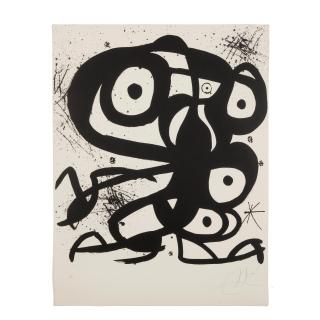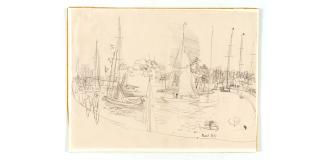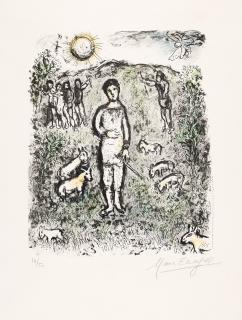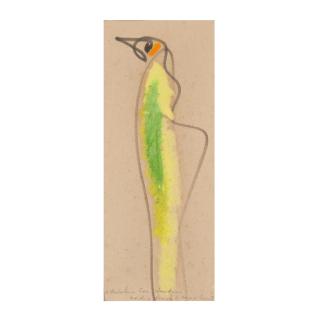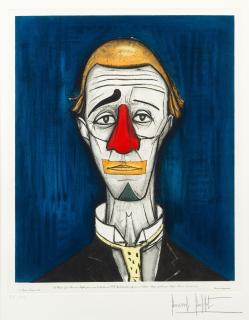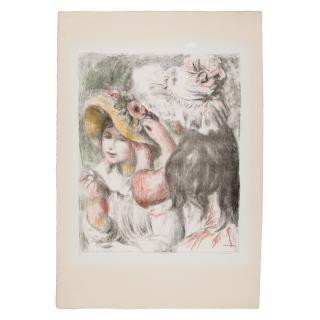Francis Picabia 1879 - 1953
The artist Francis Picabia
- French avant-garde artist of the early 20th century.
- He underwent several stylistic changes, the most notable of which was his Dada phase.
- One of his most famous works depicts a mechanical eye and borrows from the Dada idea.
Francis-Marie Martinez Picabia was a French writer, painter and graphic artist who made his name in the avant-garde art scene of the early 20th century. He moved through various styles and was best known for his involvement in the Dada movement. Born in Paris in 1879, the son of a Cuban embassy official and a French woman, Picabia showed artistic talent at an early age.
His artistic training began in 1895 at the École des arts décoratifs in Paris. He then studied with various teachers, including Fernand Humbert and Fernand Cormon. Picabia experimented with various styles including Impressionism, Fauvism, and Cubism. Picabia was a changeable artist who continued to reinvent himself. Of particular note was his participation in the Dada movement, which emerged during World War I as a rebellious response to established artistic norms.
Picabia created provocative works that were often absurd and anti-traditional. One of his most famous works from this period is L'oeil cacodylate, a painting of a mechanical eye that embodies the Dada idea of resistance to traditional conventions. After the Dada phase, Picabia explored Surrealism, creating dreamlike and fantastical works. He later explored abstract and mechanical motifs. His artistic courage to constantly embrace new challenges and styles marked his career and made him an important player in the development of modern art.
Picabia's work is valued for its diversity, innovation, and provocation. His influence on art history and his ability to push the boundaries of artistic convention are still felt today. His career reflects the ever-changing landscape of 20th century art. Picabia died in his hometown of Paris in 1953 from the effects of a stroke.
Der Künstler Francis Picabia
- Französischer Avantgarde-Künstler des frühen 20. Jahrhunderts.
- Durchlief mehrere Stilwechsel, von denen die Dada-Phase die prägnanteste war.
- Eines der bekanntesten Werke stellt ein mechanisches Auge dar und lehnt an die Dada-Idee an.
Francis-Marie Martinez Picabia war ein französischer Schriftsteller, Maler und Grafiker, der sich in der Avantgarde-Kunstszene des frühen 20. Jahrhunderts einen Namen gemacht hat. Er durchlief verschiedene Stilrichtungen und war besonders für sein Engagement in der Dada-Bewegung bekannt. 1879 in Paris als Sohn eines kubanischen Botschaftsangestellten und einer Französin geboren, zeigte Picabia früh künstlerisches Talent.
Seine künstlerische Ausbildung begann 1895 an der École des arts décoratifs in Paris. Im Anschluss studierte er unter verschiedenen Lehrern, darunter Fernand Humbert und Fernand Cormon. Picabia experimentierte mit verschiedenen Stilrichtungen wie dem Impressionismus, dem Fauvismus und dem Kubismus. Picabia war ein wandelbarer Künstler, der sich auch später noch ständig neu erfand. Besonders hervorzuheben ist seine Beteiligung an der Dada-Bewegung, die während des Ersten Weltkriegs als rebellische Antwort auf etablierte künstlerische Normen entstand.
Picabia schuf provokante Werke, die oft absurd und anti-traditionell waren. Eines seiner bekanntesten Werke aus dieser Zeit ist L'oeil cacodylate, ein Gemälde, das ein mechanisches Auge zeigt und die Dada-Idee des Widerstands gegen tradierte Konventionen verkörpert. Nach der Dada-Phase erkundete Picabia den Surrealismus und schuf traumartige und fantastische Kunstwerke. Später beschäftigte er sich mit abstrakten und mechanischen Motiven.
Sein künstlerischer Mut, sich immer wieder neuen Herausforderungen und Stilen zu stellen, prägte seine Karriere und machte ihn zu einem wichtigen Akteur in der modernen Kunstentwicklung. Picabias Werk wird für seine Vielfalt, Innovationskraft und Provokation geschätzt. Sein Einfluss auf die Kunstgeschichte und seine Fähigkeit, die Grenzen der künstlerischen Konventionen zu überschreiten, sind bis heute spürbar. Seine Karriere spiegelt die sich ständig verändernde Landschaft der Kunst im 20. Jahrhundert wider. Picabia starb 1953 in seiner Heimatstadt Paris an den Folgen eines Schlaganfalls.
Francis Picabia in News and Exhibitions
The Drawn Surrealism
The Surrealist movement sought a revolutionary new beginning for society. Drawings were a central, experimental means of expression for artists. Starting on September 13, the Statens Museum for Kunst in Copenhagen will offer unique insights into the Surrealist world of ideas with the exhibition Surrealisme på papir (Surreal on Paper).
Francis Picabia in News and Exhibitions
Der gezeichnete Surrealismus
Die surrealistische Bewegung suchte nach einem revolutionären Neuanfang für die Gesellschaft. Zeichnungen waren für die Kunstschaffenden ein zentrales, experimentelles Ausdrucksmittel. Ab dem 13. September bietet das Statens Museum for Kunst in Kopenhagen mit der Ausstellung Surrealisme på papir (Surrealismus auf Papier) einzigartige Einblicke in die surrealistische Gedankenwelt.





























